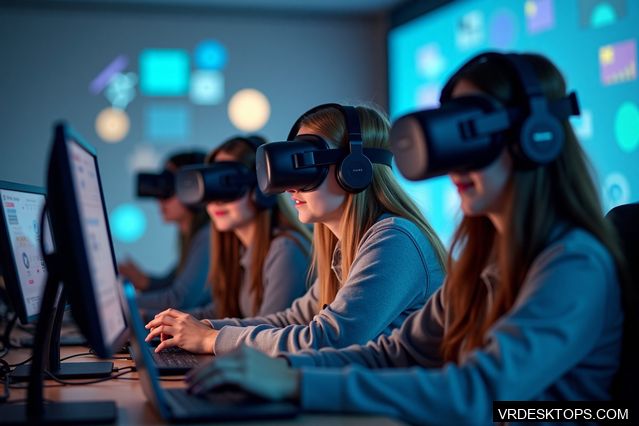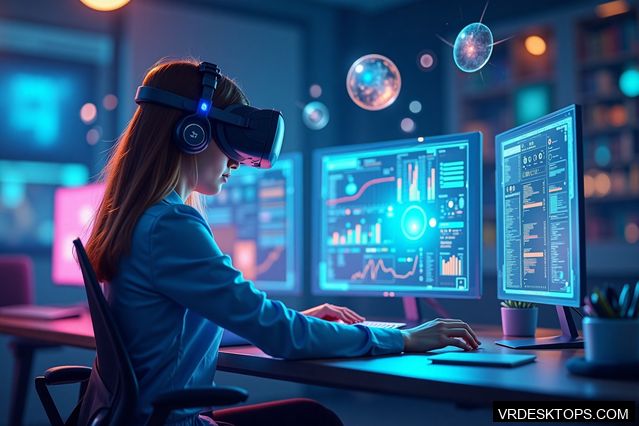Enhancing Learning with Virtual Reality
Virtual Reality (VR) technology has revolutionized various industries, and education and training are no exceptions. By integrating VR desktops into classrooms and training programs, educators and trainers can create immersive and engaging experiences for learners. VR desktops enable students to explore virtual environments, interact with objects, and simulate real-life scenarios, enhancing their learning outcomes.
Engaging Simulations and Experiments
VR desktops provide a unique opportunity for students to participate in simulations and experiments that were previously inaccessible. For instance, in science classes, students can virtually dissect organisms, conduct chemistry experiments, or explore the vastness of space. These hands-on experiences allow learners to grasp complex concepts more effectively, as they can visualize and interact with the subject matter.
Training the Workforce of the Future
In addition to education, VR desktops are transforming how industries train their workforce. From healthcare to manufacturing, VR simulations enable employees to practice skills in a safe and controlled environment. For example, surgeons can perform virtual surgeries, pilots can train in realistic flight simulations, and engineers can troubleshoot complex machinery virtually. By integrating VR desktops into training programs, organizations can enhance employee performance and reduce the risk of errors in real-world scenarios.
Remote Learning and Collaboration
With the rise of remote learning and remote work, VR desktops offer a solution to bridge the gap between physical and virtual interactions. Students and professionals can connect with their peers and instructors in virtual classrooms and collaborative workspaces, regardless of their physical locations. This not only allows for seamless communication but also fosters teamwork and creativity. VR desktops enable users to feel present in the virtual environment, creating a sense of immersion and engagement.
Overcoming Limitations and Challenges
While the integration of VR desktops in education and training brings numerous benefits, it also poses challenges that need to be addressed. One of the main challenges is the cost associated with implementing VR technology. However, as the technology advances and becomes more accessible, the cost is expected to decrease, making it more feasible for educational institutions and organizations. Additionally, ensuring the availability of high-quality VR content and proper technical support are essential for a successful integration.
The Future of VR Desktops in Education and Training
As VR technology continues to evolve, the possibilities for its integration in education and training are limitless. Virtual field trips, language immersion programs, and soft skills training are just a few examples of how VR desktops can revolutionize learning experiences. By providing learners with interactive and immersive environments, VR desktops empower them to develop critical thinking, problem-solving, and collaboration skills necessary for success in the digital age.








